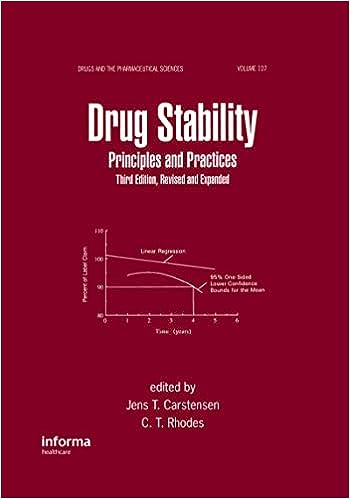Expert Tips for Managing Stability Storage Conditions Across Climatic Zones
Introduction
Stability storage conditions are a fundamental aspect of pharmaceutical development, ensuring that drug products retain their quality, safety, and efficacy throughout their shelf life. The International Council for Harmonisation (ICH) guidelines classify the world into distinct climatic zones, each with specific storage conditions for stability testing. This article provides expert tips and strategies for navigating stability storage conditions across different climatic zones, helping manufacturers ensure compliance and maintain product integrity.
Understanding Climatic Zones
ICH guidelines divide the world into four primary climatic zones based on temperature
- Zone I: Temperate climates (21°C ± 2°C / 45% RH ± 5% RH).
- Zone II: Subtropical and temperate climates (25°C ± 2°C / 60% RH ± 5% RH).
- Zone III: Hot and dry climates (30°C ± 2°C / 35% RH ± 5% RH).
- Zone IV: Hot and humid climates, subdivided into:
- Zone IVa: 30°C ± 2°C / 65% RH ± 5% RH.
- Zone IVb: 30°C ± 2°C / 75% RH ± 5% RH (very hot and humid).
Tip: Identify the target market’s climatic zone early to align stability testing protocols with local regulatory requirements.
Key Storage Conditions for Stability Testing
Each climatic zone has recommended storage conditions for long-term, intermediate, and accelerated stability studies:
- Long-Term Testing: Conducted under conditions reflecting the intended storage environment. For example:
- Zone II: 25°C ± 2°C / 60% RH ± 5% RH.
- Zone IVb: 30°C ± 2°C / 75% RH ± 5% RH.
- Intermediate Testing: Often conducted at 30°C ± 2°C / 65% RH ± 5% RH to bridge long-term and accelerated studies.
- Accelerated Testing: Simulates the effects of long-term storage in a shorter period, typically at 40°C ± 2°C / 75% RH ± 5% RH.
Tip: Include additional testing for specific zones if the product is intended for global distribution.
Tips for Navigating Stability Storage Conditions
1. Tailor Protocols to Target Markets
Different regions may require customized stability protocols to meet their unique environmental and regulatory demands. For instance:
- ASEAN: Requires testing under Zone IVb conditions for hot and humid climates.
- FDA: Primarily aligns with Zone II conditions but may request additional studies for tropical regions.
Tip: Engage with local regulatory consultants to address region-specific stability requirements effectively.
2. Validate Stability Chambers
Stability chambers must maintain precise temperature and humidity levels to ensure accurate results. Best practices include:
- Regular calibration of temperature and humidity sensors.
- Real-time monitoring systems for environmental conditions.
- Backup systems to prevent data loss during power outages.
Tip: Conduct periodic validation to ensure chambers consistently meet regulatory standards.
3. Conduct Stress Testing
Stress testing evaluates the product’s stability under extreme conditions, such as high temperature or freezing, to identify potential degradation pathways. This complements long-term and accelerated studies.
- Conditions: Expose the product to 50°C or higher for a short duration.
- Parameters: Monitor critical quality attributes like assay, impurities, and physical appearance.
Tip: Use stress testing data to support stability claims and shelf life predictions.
4. Optimize Packaging for Climatic Zones
Packaging materials significantly impact product stability, especially in hot and humid climates. Key considerations include:
- Moisture Protection: Use desiccants and moisture-resistant materials for Zone IVb conditions.
- Light Protection: Employ opaque or UV-resistant packaging for light-sensitive products.
- Air Tightness: Ensure airtight seals to prevent oxygen ingress.
Tip: Conduct packaging compatibility studies under different storage conditions to validate effectiveness.
5. Monitor and Analyze Data
Stability data collection and analysis are critical for interpreting storage condition effects. Key steps include:
- Regularly sampling and testing products at defined intervals.
- Identifying trends and significant changes in quality attributes.
- Using statistical models to extrapolate long-term stability from accelerated data.
Tip: Document all findings comprehensively for regulatory submissions.
Challenges in Navigating Stability Storage Conditions
Adapting stability protocols to diverse climatic zones can present challenges:
- Infrastructure Requirements: Maintaining multiple stability chambers for different zones requires significant investment.
- Regulatory Complexity: Varying regional requirements may necessitate additional studies.
- Data Management: Handling large datasets from diverse conditions can be resource-intensive.
Tip: Leverage advanced data management systems to streamline data collection and analysis.
Emerging Trends in Stability Storage Conditions
Innovations are shaping the future of stability testing across climatic zones:
- Predictive Analytics: AI-driven tools forecast stability trends, reducing reliance on extensive real-time studies.
- Sustainability Initiatives: Eco-friendly stability chambers and recyclable packaging materials are gaining prominence.
- Digital Transformation: Cloud-based platforms improve data accuracy and facilitate regulatory submissions.
Tip: Stay informed about technological advancements to enhance efficiency and compliance in stability testing.
Conclusion
Navigating stability storage conditions across different climatic zones requires a strategic approach that balances global standards with regional compliance. By tailoring protocols to market-specific needs, optimizing packaging, and leveraging advanced technologies, pharmaceutical manufacturers can ensure product stability and regulatory approval in diverse regions. As the industry evolves, innovations in stability testing will continue to support the delivery of high-quality medicines worldwide.

